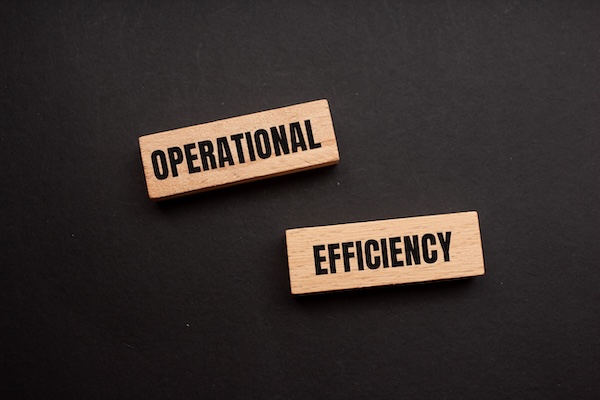
Hotels and resorts in the post-pandemic operating environment have been challenged by higher costs in everything from labor and energy to food and supplies. Additionally, it has become nearly impossible for properties to maintain previous levels of service with a continued shortage of a qualified and motivated workers. The pressure on hospitality management companies and ownership to show returns, combined with increasing guest expectations, has led to a deeper focus on the middle of profit and loss (P&L) expenses that go beyond basic labor controls and service offerings.
Prior to 2020, hotels and resorts could look to shift expenses, modify services or schedules to impact flow when needed. The relatively consistent demand and steady growth experienced since the economic recovery in 2011 created stability, allowing properties to plan strategically for steady Gross Operating Profit (GOP) growth.
Following the pandemic, its impact in the market, dramatic shifts in operations due to staffing shortages, pandemic restrictions and other challenges have forced dramatic changes in operations. Changes were severe and often resulted in elimination of services from daily room cleaning to valet or shuttle services. Some properties even cut F&B outlet operations and front desk services. Not surprisingly, service and performance suffered.
As demand returned, focus on the middle of the P&L slipped, as costs went up, properties needed multiple vendors to meet their needs and pricing increased (as there simply was not enough product available to meet needs).
Fast forward to 2024, and though supply-chain issues have diminished, prices are still exceedingly high. Competition is returning but there are several areas that need to be evaluated if hotels and resorts want to improve profitability.
Tips to Drive Profitability
There is a maxim in hospitality that goes: “A healthy top line will drive a healthy bottom line.” That was true; it’s now morphed into: “A healthy top line is a part of a healthy bottom line.” Best practices need to come back to hospitality including, and specifically, competitive bidding and shopping for vendors, use of purchasing groups and a serious focus on energy use needs to be top of the list.
For years, hotels and resorts were following “green” programs for recycling, energy savings, etc. There are multiple reasons why this should take a renewed focus, besides being the right thing to do for the environment and your community. The cost of energy has skyrocketed in the past 36 months, and utility costs are typically one of the largest undistributed expenses in hospitality. Reducing those costs can have a substantial and immediate impact on profitability.
Several key items include:
- Active preventative maintenance on all main and in-rooms HVAC systems for optimal efficiency.
- Programming and upgrading building and energy management systems (BMS and EMS) to reduce heating and cooling during unoccupied or lower demand periods.
- Competitively reviewing energy providers and contracting energy vs. utilizing “retail” energy pricing.
- Operations shifts including “dark room” processes and setting the “temp of the day” for vacant rooms where no BMS exists.
In addition to energy conservation, looking at the revision in operating standards that arose following the return of demand in 2021 is imperative. Many properties restored services based on staffing levels, but limited the previously utilized standards and checks and balances for performance. As preventative maintenance took a back seat to simple break-fix work, many workarounds were needed in housekeeping, F&B, engineering and others to compensate. A return to previous standards is not only required to maintain guest service standards, but also to improve operating efficiency.
Key processes include:
- Returning to full preventative maintenance programs and capital investments in infrastructure.
- Implementing programs to incentivize team members to report and correct leaks and other mechanical issues.
- Setting energy standards in rooms and public areas e.g., “temp of the day.”
- Utilizing competitive bidding for housekeeping, engineering, and F&B supplies.
- Reviewing overtime needs/use with leadership teams.
- Investing in training and team building programs to improve the culture and reduce turnover.
The old adage “There is never enough time to do it right the first time but always enough time to do it over” is a cost killer. Investing in training to reduce turnover; holding team members accountable for performance and limiting “go back” time in housekeeping, engineering, etc., along with enhanced desk training to control adjustments and offer alternatives, is essential. It is also critical to ensure teams have the tools to be successful. This helps drive team member engagement at a foundational level. Investment and dedication to culture has driven performance and carried us through the darkest days in hospitality and is an essential element to on-going success.
In hospitality there are investments and expenses. Investments in process, training and accountability will result in significantly improved performance and margins. Best practices are best practices for a reason. As we return to focusing on the little things in our business—labor hours, scheduling, linen costs, energy costs, etc.—we will find that the big things stabilize and profitability levels out. This will also help properties survive, even thrive, in an era of shifting demand and seasonality. The investments in service, training, and culture growth at properties will undoubtedly provide the greatest returns long-term.
Overall, cost containment does not mean properties must curtail services, it is margin control through efficiency that builds stability and the long-term viability of the property. As properties focus on being the best employer in the market through stability and investment in the workforce and consistently apply best-practices, efficiency will drive market-leading financial and service results.
This perspective article was contributed by Jeff Brainard, VP of Hospitality and Sales at Southern Management Companies.






